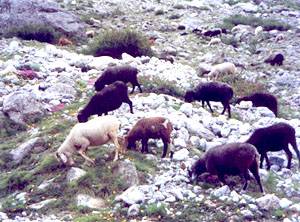
Enter your email address to subscribe to our Newsletter.
TheNanda Deviand Valley of Flowers National Parks are naturally well protected due to their inaccessibility.
There has been no livestock grazing inside these parks since 1983. Mountaineering and adventure-based activities inside Nanda Devi National Park has been banned since 1983 due to garbage accumulation and environmental degradation by such activities in the past.
It is spread over 630 sq km areas, overshadowed by thepeakofNanda DeviPeak (second highest mountain inIndia).
TheNanda DeviNational Parkis one of the most spectacular wilderness areas in theHimalayas. It is dominated by thepeakofNanda Devi, which rises to over 7,800 m. No people live in the park, which has remained more or less intact because of its inaccessibility. It is the habitat of several endangered mammals, especially the snow leopard, Himalayan musk deer and bharal.
Commonly referred to as 'Handa Devi Sanctuary', the name was changed toSanjayGandhiNational Park. This met with local opposition and the site was gazetted asHandaDeviNational Park. The park was inscribed on the World Heritage List in December 1988. The park constitutes the core zone of a much larger area, extending as far north as the Dhauli Ganga, that has been proposed as a biosphere reserve.
The formidable Rishi Ganga Gorge runs through this park.
The park is divided into two parts — Inner and Outer. TheUpperRishiValley, often referred to as the Inner Sanctuary is fed by Changbang, North Rishi andNorth Nanda Deviglaciers. The Trisuli and Ramani glaciers are features of the Outer Sanctuary.
The national park is host to more than 300 varieties of flowering species including rhododendron and juniper. Because of the altitude and weather conditions,Nanda Deviis almost devoid of vegetation. The most common trees in theNanda DeviNational Parkare fir, birch and rhododendron. Alpine Vegetation comprising of juniper scrubs, mosses and lichens also cover extensive areas of theNanda DeviNational Park.
Mammals like the Himalayan Musk Deer, Mainland Serow and the Himalayan Tahr can be spotted here. Gorals too can be sighted though they are more commonly found in the near vicinity of the park rather than inside it. The illusive Snow Leopard, the Himalayan Black Bear or Brown Bear, the Himalayan Mush Deer and Langur can been seen.
Birds that can be spotted here the Yellow-bellied Fantail Flycatcher, Black Tit, Blue-fronted Redstart, Indian Tree Pipit, Orange-flanked Bush Robin, the Common Rosefinch and the Nutcracker. There have been at least 28 different varieties of butterflies documented here.
The ideal time to visit theNanda DeviNational Parkis from April to October. In the months of June to August, there is heavy rainfall in the area.
Some facts aboutNanda DeviNational Park: